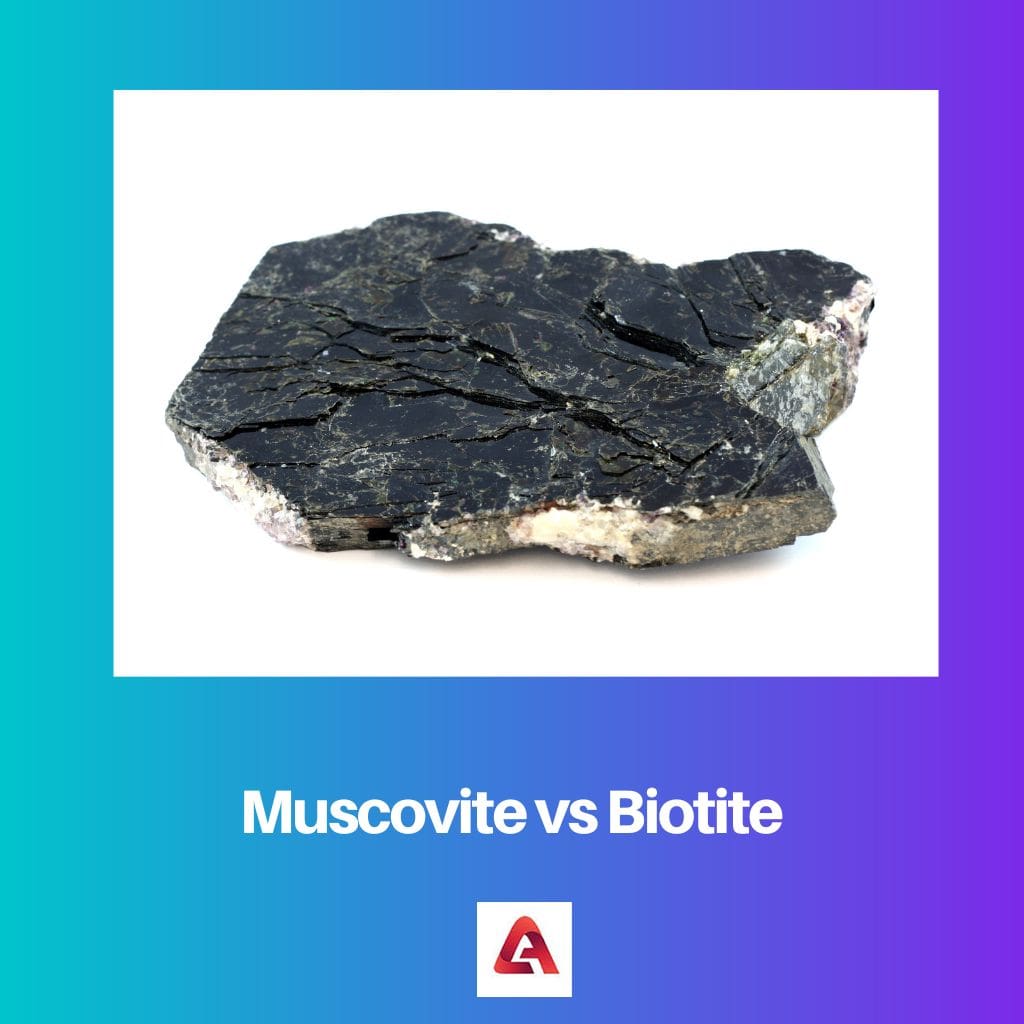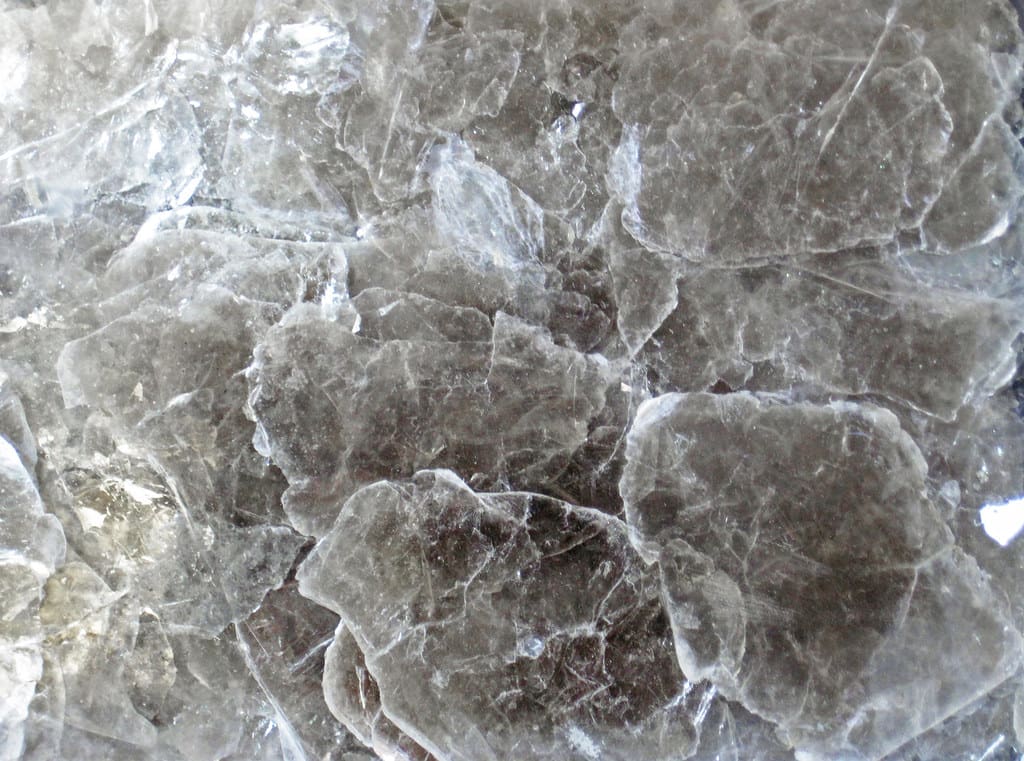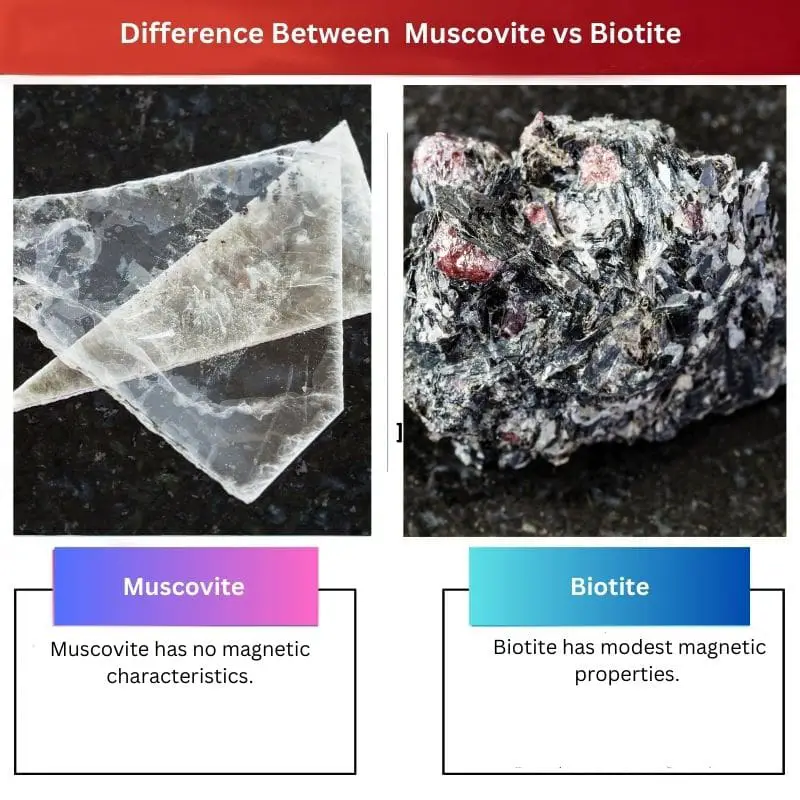Key Takeaways
- Muscovite and Biotite are mica minerals commonly found in igneous and metamorphic rocks.
- Muscovite is colorless or pale yellow and has a higher silica content than Biotite.
- Biotite is dark brown or black and has a higher iron and magnesium content than Muscovite.

What is Muscovite?
Muscovite is a mineral that belongs to the mica family. Also called potash or white mica, Muscovite is a hydrated sheet silicate mineral of potassium and aluminum. It is the most prevalent mineral in the mica family found in igneous, metamorphic, and sedimentary rocks. It gets its name from the old name for Moscow, where it was discovered and utilized as an ornamental material.
The clear variety is translucent, but the darker variant is opaque. Its crystal structure is made up of two hexagonal flakes bonded together. It’s a transparent sheet of mineral and ranges from colourless to yellowish or pale grey. One can see through the other side of the sheet. One of the most defining features of Muscovite is its perfect basal cleavage. Because of its elasticity, it may be sliced into thin sheets.
Perfect cleavage means pulling the crystal apart into fragile elastic sheets. These sheets are an ideal replacement for glass, which can be used for high-temperature industrial applications such as furnace doors or oven windows. It can also be used as an insulating material for manufacturing electrical apparatus or as fillers in paints, surface treatments, plastic, and other products.

What is Biotite?
Biotite is another sheet silicate mineral found in various metamorphic rocks, such as granites, pegmatites, peridotites, and other igneous rocks. Like Muscovite, it is a sheet mineral of the mica group, except it contains magnesium and potassium. Biotites are also black micas because they are dark green, brown, or black. They exhibit high interference colours in cross-polar light. Iron is a crucial element in biotites, which gives them a dark or black appearance.
Biotite has a layered structure that allows it to be flexible and create thin sheets. It is made up of two tetrahedral silicate layers and one octahedral layer. Silicon and aluminum comprise the tetrahedral layers, whereas iron and magnesium comprise the octahedral layer. This structure gives Biotite its flexibility and ability to form thin sheets.
Biotite has a variety of applications and, because of its versatility, is frequently utilized in producing insulation, roofing shingles, and other building products. It is also used in asphalt and is a necessary component of micaceous paint, which protects metal surfaces against corrosion. Biotite is also utilized in various industrial applications, including as an abrasive and a catalyst in chemical reactions.
Another fascinating characteristic of biotites is that they are susceptible to weathering and degrade into clay minerals. One of the most common applications for Biotite is to establish the age of rocks using argon-argon or potassium-argon dating.

Difference Between Muscovite and Biotite
- Muscovite has no magnetic characteristics, but Biotite has modest magnetic properties. It is because Biotite contains iron.
- Muscovite is transparent to translucent, but Biotite is opaque. Muscovite is more reflective than Biotite because it has a greater refractive index.
- Muscovite has a vitreous luster, whilst Biotite has a pearly to dull luster, owing to the two minerals’ differing optical characteristics.
- Muscovites are found in igneous, metamorphic, sedimentary rocks, and even pegmatites. Biotite is most found in metamorphic rocks but can also be found in igneous rocks.
- Because of its increased demand in the electronics and glass industries, Muscovite is more expensive than Biotite.
Comparison Between Muscovite and Biotite
| Parameters of Comparison | Muscovite | Biotite |
|---|---|---|
| Colour | Colourless or white. | Black to dark brown. |
| Cleavage | Perfect cleavage in one direction. | Perfect cleavage in two directions. |
| Structure | Monoclinic mineral. | Monoclinic-triclinic mix mineral. |
| Composition | It is dominated by potassium. | It is composed of iron and magnesium. |
| Streak | White sheds tiny flakes. | White to grey flakes are produced. |





